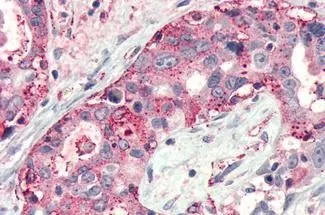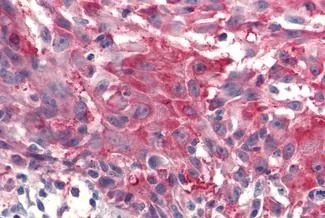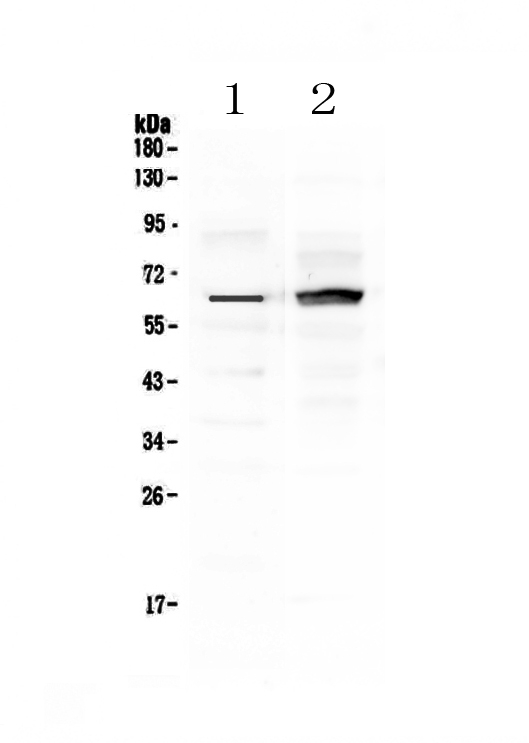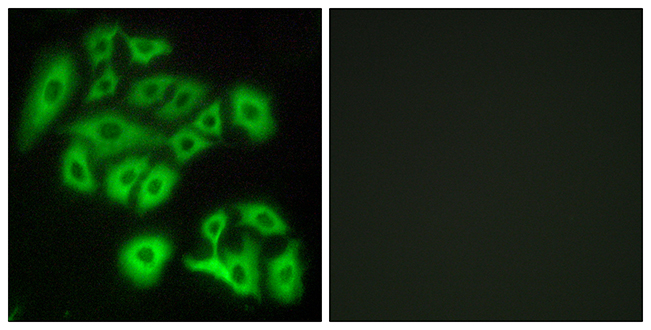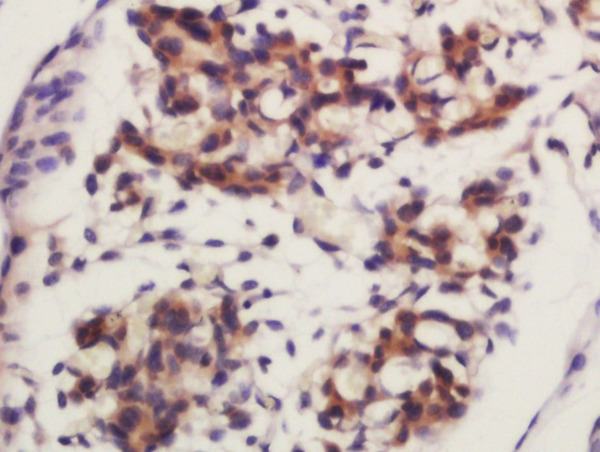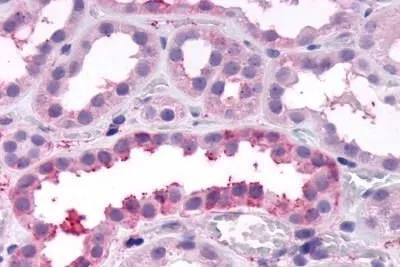
IHC-P analysis of human kidney tissue using GTX12992 Frizzled 4 antibody. Antigen retrieval : Heat-induced antigen retrieval
Frizzled 4 antibody
GTX12992
ApplicationsImmunoHistoChemistry, ImmunoHistoChemistry Paraffin
Product group Antibodies
TargetFZD4
Overview
- SupplierGeneTex
- Product NameFrizzled 4 antibody
- Delivery Days Customer9
- Application Supplier NoteIHC-P: 25 microg/ml. IHC-P: 25 microg/ml. *Optimal dilutions/concentrations should be determined by the researcher.Not tested in other applications.
- ApplicationsImmunoHistoChemistry, ImmunoHistoChemistry Paraffin
- CertificationResearch Use Only
- ClonalityPolyclonal
- Concentration1 mg/ml
- ConjugateUnconjugated
- Gene ID8322
- Target nameFZD4
- Target descriptionfrizzled class receptor 4
- Target synonymsCD344, EVR1, FEVR, FZD4S, Fz-4, Fz4, FzE4, GPCR, hFz4, frizzled-4, WNT receptor frizzled-4, frizzled 4, seven transmembrane spanning receptor, frizzled family receptor 4, frizzled homolog 4
- HostRabbit
- IsotypeIgG
- Protein IDQ9ULV1
- Protein NameFrizzled-4
- Scientific DescriptionThis gene is a member of the frizzled gene family. Members of this family encode seven-transmembrane domain proteins that are receptors for the Wingless type MMTV integration site family of signaling proteins. Most frizzled receptors are coupled to the beta-catenin canonical signaling pathway. This protein may play a role as a positive regulator of the Wingless type MMTV integration site signaling pathway. A transcript variant retaining intronic sequence and encoding a shorter isoform has been described, however, its expression is not supported by other experimental evidence. [provided by RefSeq, Jul 2008]
- Storage Instruction-20°C or -80°C,2°C to 8°C
- UNSPSC12352203

